When it came out in the late 70s the Moog Prodigy was the moog attempt to fight the “japanese invasion”, so it was a stripped down version of the minimoog at a competitive price.
It was really popular indeed and was a big american “budget-Mini” till Sequential Circuits made the Pro One.
The structure is quite simple: a 2 syncable VCOs with the classic 24dB moog ladder filter, two ASD/R and a simple lfo.
The two vcos are similar but they have different waveforms and different “feet” settings.
VCO1 has the 32′ and offers Pulse, Saw and Tri waveforms.
VCO2 has the 4′ and TRi, Square and Saw.
The second vco has a detune knob and can be synced to vco1 creating many complex waves (a feature unavailable on the Minimoog).
Using the Pitch Wheel with the sync on , the wheel “move” only the VCO2 creating big alterations in the waveform content.
Than there is a mixer/vca part , the Filter with cutoff, (env)Amount, and Emphasis (resonance) and the two envelope ADS/ASR.
The LFO is quite simple and offers square and tri waves with a rate control that can go from 0.3Hz to 30 Hz, not the faster or slowest lfo, but really useful.
The most interesting part of this synth is the behaviour of the filter that is indeed the strengh of all moog synths, a really organic, warm and brilliant sounding!
It sounds always balanced, the resonance can get quite acid and never get thin.
The vcos are really capable, rich and armonic over all the audio spectrum, and the sync is a top notch feature in a simple synth because the vcos interact very well creating complex waveforms that sound always usable.
The behaviour of the envelopes is really interesting, they are snappy and fast, but they move in a really organic and “natural” way.
Even the 3 stage concept is not limitating at all.
All in all this is a great vintage synth that is always quite cheap compared to the always rising prices of Minimoogs, and though it may seem quite basicv/simple, getting in depth with it can lead to a very wide range of sounds, some even typical “Prodigy trademarks” , not only mini emulations…
Compared to the new analogs (moogs and moog clones) the prodigy has a particular fashion that set this synth aside from the new generation, and it’s all about the sound!
While the Prodigy has a raw but harmonic sound that’s always present and creamy, today’s synths are more “bright” but not brilliant, the sound is cleaner and more defined, when you turn the cut off down they are smooth and quite flat/static , while the prodigy always seems to oscillate wildly under its wood and metal case…
My prodigy has two interesting MODS.
- FILTER FM : the vco2 can modulate the filter frequency creating wild sounds, from vocal-like textures to noise or drones.
- CV-GATE MOD : a standard cv-gate interface instead of the moog s-trig.
I chose to have this mod because my model (an early BX336) did not have any control socket.
I’ll provide photos of the mods in a future post 😉 , stay tuned!
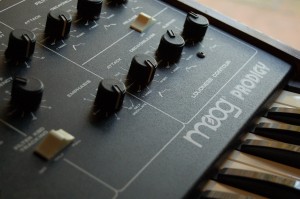
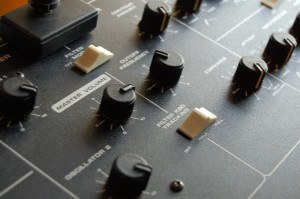
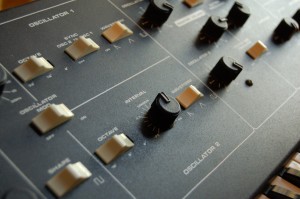
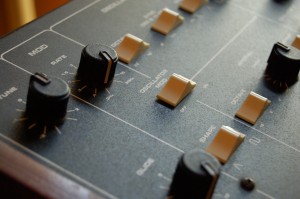
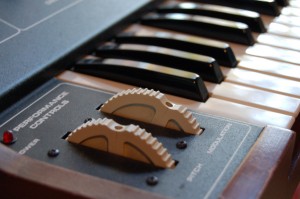
That’s interesting stuff thanks. I’ve owned my 336 since 1981. Did you do the mods yourself or did you buy a kit? I’m blowing teh dust off all my old gear and tring to get them all talking to each other. Esp my Kork SQ10 and the Prodigy.
1/10 for my spellings in that reply.
Hi Shaun, a friend did the mod for me but I think it’s kind a simple thing.

I can take some hi-res shot to let you understand how the mods were done.
These mods don’t force you to modify the motherboard, just solder a couple of wires…you can return to your “original” prodigy when you like…
thanx for a great post mate
What is up everyone? My name is Jessica. I am from Slovakia. I am new to the forum and just wanted to say hi.. I hope I posted this in the right section on your forum… http://synthvibrations.com/?7a9e0b1087b2df8d632a33da965,
Really good work about this website was done. Keep trying more – thanks!
Thank you very much!

Hey Guys!!!
I just recently bought a Moog Prodigy and wanted to run by a couple of things going on with it if its a normal functionality of the device.
1st off, The Pitch wheel clicks when in middle position, it does not roll smoothly up and down, high and low , like the Mod Wheel. Is that how they made this function?
2ndly, While holding down a note indefinitely, i am able to play other notes lower in register while the new notes sound and when releasing the new notes introduced and returning to the original note being held all notes are heard. In contrast, While hold a note indefinitely and adding another note in the higher register you dont even hear any new notes being introduced just the one note being held. When going to lower the sound from original note passes to newly introduced notes and returns upon releasing , and the higher doesn’t play any thing when adding other notes. This is kind of hard to explain. I BELIEVE THEY CALL THIS LOW PRIORITY. Other note priority settings include “high priority” and “last note”.
CAN the priority note settings be changed be changed on the Prodigy or not?
And Is This how your functions also ?
I really just need to know if there is a problem with this synth or if this was how if was intended to operate.
Thank you soo much in advance for any information.
Vulcho Bonev
Hi Vulcho!
The Prodigy is a great synth 😉
your Prodigy is ok , the pitch wheel must click , because it’s the position zero , like you are not bending the pitch, it’s a “rest” position.
The “low note priority” it’s exactly the way you described it.
If a lower note is played you can hear it , if a higher note is played the instruments rest on the lower note held.
The low note priority is a carachteristic feature of old moogs and other analog monosynth of the ’70s.
It can be modified in hi-note priority or last- note priority by a tech, or someone who is able to work with electronics, you cannot change it by yourself from a function on the panel.
hope this help.
thank you for your comment!
Francesco
hi
I was looking for some information on the FM mod. It seems time has taken it’s toll on the web resources and there is very little on the internet now as to the specific details of this mod. Would you happen to have any more information i.e. circuit diagrams on where the mod goes?
I seem to understand that a pot is attached via a resistor to the Prodigy PCB but I am not sure of the details
Many thanks
Alan Watkins